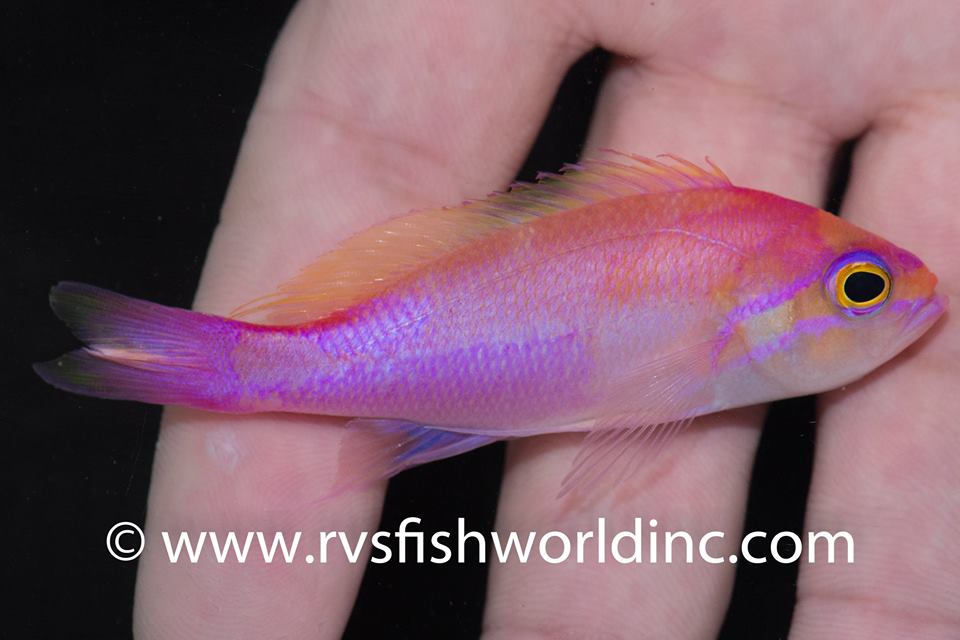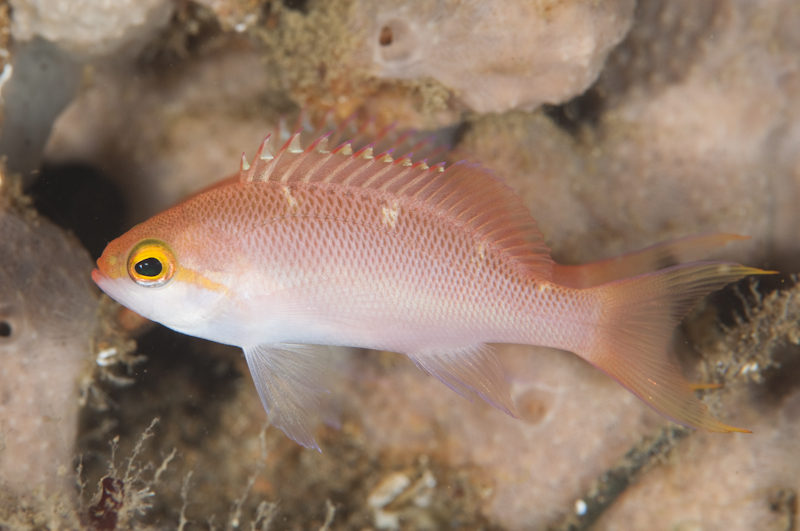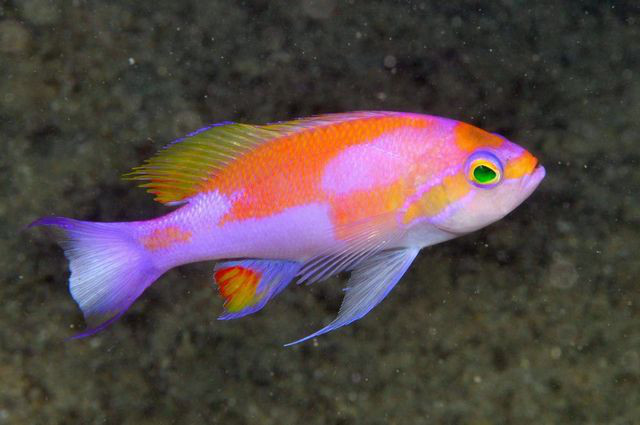Hutomo’s Anthias might very well be the most beautiful species of Pseudanthias that you’ve never heard of. This breathtaking fish is only rarely photographed, and aquarium specimens have always been few and far between. In fact, only a handful of images exist online showing specimens in captivity, but this might all change now that collectors have stumbled upon what appears to be a large population of them.

Hutomo’s Anthias (Pseudanthias hutomoi), a small male from Scarborough Shoal, 40 meters. Credit: Barnett Shutman / RVS Fishworld
Barnett Shutman of RVS Fishworld informed me that this is the first time he has encountered this fish in his many years of collecting. A dozen specimens were obtained from depths of around 40 meters. The typical range for the species is reported to be 30-70 meters, though, on average, it tends to be found towards the deeper end. This explains to some extent why we don’t see it very often, though certainly other deeper-water taxa show up more regularly. Allen & Erdmann’s guide to reef fishes suggests the species favors siltier coastal habitats, and the limited in situ photography we have seems to back this up.
These particular specimens originated from Scarborough Shoal, a small, mostly submerged atoll which lies a little over 200 miles northwest of Manila in the Philippines. But Pseudanthias hutomoi is actually a fairly widespread species, with a distribution throughout the Coral Triangle. Previous aquarium specimens have been exported from Bali, and records exists as far west as Vanuatu (technically, a bit outside the Coral Triangle). Interestingly, there are numerous images of it taken from the reefs near Anilao and Cebu—both areas that see heavy aquarium collection—which would seem to argue that the reason we don’t find it offered for sale all that often has to do more with divers ignoring its preferred ecological niche than from it being truly rare in the wild.

Female Hutomo’s Anthias from Anilao. Note the characteristic white dorsal spots. Credit: Guts Diving Club
Males and females are quite different in appearance, as tends to be the case with this genus of protogynous hermaphrodites. While females are rather staid in their colors, the largest males sport an eye-catching mix of lavender and orange arranged along an interesting, checkerboard pattern near the midline. Where this pattern reverses on itself, there is a weakly developed vertical bar. A similar bar can be seen in quite a few other groups within this genus, but perhaps the species most closely related to it are those in the P. lunulatus group, which likewise share a lavender sheen and colorful anal fin, as well as a preference for deeper habitats. Unfortunately, these scant few details are about all we know concerning Hutomo’s Anthias, and any aquarist lucky enough to get their hands on a specimen is definitely encouraged to document it thoroughly with photos and video.











0 Comments